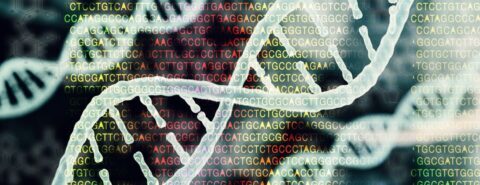A snapshot of genomics and bioinformatics in modern biology research

A snapshot of genomics and bioinformatics in modern biology research
I often tell my students that biology has become a data-driven field. Certainly, there’s a general sense that methods related to biological sequences (that is methods in genomics and bioinformatics) have become very widespread. But what does that really mean?
To put a little flesh on those bones, I decided to look in detail at all the biology-related articles in a single issue of the journal Nature (issue 8069, the one that was current when I started). I’m focusing here on articles, representing novel peer reviewed research. By my count, 16 of the 26 papers in this issue are related to biology in one way or another. (Those 16 also include neuroscience and bio-engineering related papers).
For each of these articles I went through the methods looking for genomics and bioinformatics related approaches. I sorted what I found into a few categories. Here’s a short summary:
Four of the papers (25%) used high throughput DNA sequencing.Four were doing phylogenetic reconstruction. (Two of these were doing both phylogenetic reconstruction and sequencing).Four were doing RNA seq, that is high throughput sequencing of RNA to study gene expression.Five used computational methods of sequence analysis (e.g. alignment or its derivatives).My “other high throughput methods” category also contained five papers.Considering all high throughput sequence-related methods together, I found that 10/16 papers fell into at least one of these categories. That is, just over 60% of biology papers in this issue were using one or another such method. Which is to say, these methods really are very common in modern research.
The papers in issue 8069 used these methods to study a huge diversity of questions. One paper used sequencing based approaches to better characterize variation in the pea plant studied by Gregor Mendel, using this to get insights into the basis of several of his traits (which had not previously been known). Another looked at deep phylogenetic relationships among eukaryotes. Still another compared patterns of methylation during development between eutherian and marsupial mammals. I could go on, but the message is that genomics and bioinformatics are used to answer many different kinds of questions.
The take-away is that these are foundational methods for modern biology. As such they should be basic training for any student interested in continuing with research in the biological sciences. This is not only so students can conduct research on their own, but also so they can understand papers they read in a deeper and more sophisticated way.
In our recent second edition of the book Concepts in Bioinformatics and Genomics, we try to balance biology, mathematics and programming, as well as build knowledge from the ground up. Topics range from RNA-Seq and genome-wide association studies to alignment and phylogenetic reconstruction. Our hope is that this approach will help students understand the research they encounter on a deeper level and prepare them to potentially participate in that enterprise.
Featured image: by CI Photos via ShutterStock.
Oxford University Press's Blog
- Oxford University Press's profile
- 238 followers



